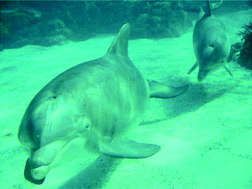Free chlorine (FC) and free bromine (FB) produced during ozonation treatment of aquarium seawater pose a serious threat to the health of ornamental aquatic animals, but little is known about the concentration levels of these chemicals in aquarium facilities. In this study, a highly selective and sensitive analytical method based on the derivatization of FC and FB to corresponding 4-halo-2,6-dimethylphenols by 2,6-dimethylphenol was developed. The formed halo-derivatives were extracted by hexane and subsequently quantified by gas chromatography-mass spectrometry. The calibration curves showed good linearity (r2 > 0.999) in a broad concentration range of 2.1–4200 μg L−1 for FC and 3.3–1700 μg L−1 for FB. The method detection limits (S/N = 3) were determined to be 62.7 and 71.6 ng L−1 for FC and FB, respectively. The developed method exhibited good recovery, selectivity, precision and was successfully applied to monitor the formation and decay of FC and FB in ozonated seawater. During the ozonation process, the formation of FB dominated, while much less chloride was oxidized to FC; FB decayed much faster than FC. The concentrations of FC and FB in various animal tanks of Beijing Aquarium were also monitored. The results show that 30.1–56.4 μg L−1 FC and 26.5–730.7 μg L−1 FB were present in aquarium tanks, revealing that the health of aquatic animals (particularly fish, jellyfish, and coral) was under severe threat.

You have access to this article
 Please wait while we load your content...
Something went wrong. Try again?
Please wait while we load your content...
Something went wrong. Try again?


 Please wait while we load your content...
Please wait while we load your content...